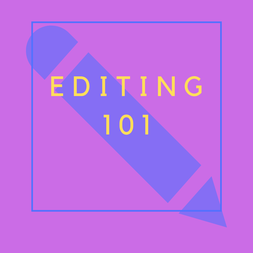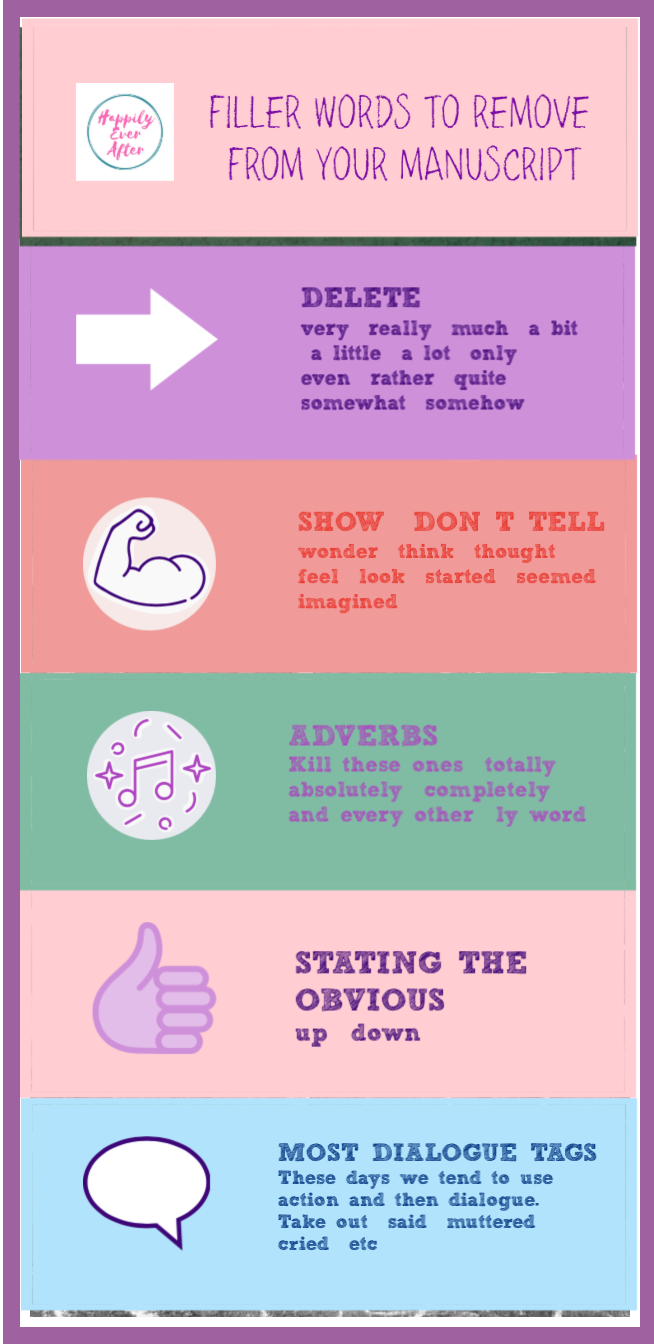 In this, the second of the Editing 101 series, we’ll be looking at ‘filler’ words. These are words that creep into your ms and add no value whatsoever. Some of these filler words also kill your action as you slide into ‘telling’ instead of ‘showing’ and yank you out of deep pov (point-of-view). How to edit your manuscript of these slow poisons? Use your Edit/Replace function and scour through your ms. Be liberal with the ‘delete’ key. And no, the editor at the publisher will not do this for you...they will expect you to have done this beforehand (it’s what they mean by a ‘polished' ms). Next up in the Editing 101 series - How to do your own developmental edit.
0 Comments
 Welcome to this the third part of Editing 101 (previous lessons here and here). The developmental edit is super important. This type of edit looks at your story, chapter by chapter, and gives feedback on what’s working and what’s not. All manuscripts can benefit from a developmental edit (just saying). But if you can’t afford to get one done, there are things you can do yourself. Step 1: Write up your goal, motivation and conflict for each character. Go through each chapter in your ms. With the protagonist in mind, answer the following questions: Has their goal been thwarted? Is the conflict increasing? Are their motivations clear? Repeat process for your love interest. This is the biggest thing you can do. Will it take time? Of course, yes. But this is where stories sag and buckle. It’s worth making sure that your story has addressed these issues in each and every chapter, otherwise a form rejection will be coming your way (sorry about that, it always sucks, but knowing why helps). Step 2: Have a look at your scenes. Does each scene have a purpose i.e. does it move the plot along in some way? If not, delete. Is it too long? Cut it down. Is it too short? Increase. This will help to improve your pacing. Step 3: Have a look at your dialogue. Does each character sound the same? Have you used the same phrasing for each? Rework, revise. Step 4: Have a look at your characters. Do they develop over the course of the story? If not, go back and have them make different choices that are in line with believable growth. Step 5: Check that your tone matches the story. A serious novel will not be enriched with over-the-top characters who would be better suited to a comedic novel. Check with a critical eye that you don’t have a Disney character in an Austen novel. Suddenly, copy editing seems so much easier. Hang in there! You got this!  Welcome to the first post in EDITING 101, a series of blog posts dedicated to the editing process. So much focus is on the writing, it’s easy to forget the editing. And yet, most of writing is rewriting, which means...editing. First up, there are those writers who aren’t keen on editing. They see it as a chore. Shouldn’t a writer just know how to write and badda-bing-badda-boom, perfect prose emerges? Not a single typo, repetitive phrase, clunky plot, or awkward phrase. Perfect. Guess what? There is no such person. That’s not how writing works. Ever. The writer is NEVER the only person in the writing process. There are developmental editors, proofers, copy editors, even acquisition editors who have a say in the final product. It’s always a team process. But, that’s when you get the contract. Before you get the contract, you have to work through your first draft yourself. Some people engage their beta reader team, others hire an editor. Either way, it helps to have a second and/or third opinion from someone other than your nearest and dearest (they don’t know any better and will tell you they love it). Here’s the deal: Once you have that contract, your novel will head out on the first round of edits. Here’s where you’ll wonder how you got a contract in the first place. Your editor is generally not a cuddly bunny hippity hopping you through the changes. They need the book to be as close to perfect as possible (notice I said, close to), and they will let you know how far away from 'close to' your ms is. But, they’re not done with you, yet. The ms then goes through a second round of edits. There will be even more things you need to fix up. Here’s where you’ll discover that you’re a huge fan of certain stock phrases or that your hero and heroine use the same swear words. Now, it’s ready for publication. Nope, no it isn’t. It now heads out to the proofer. Once again, the proofed copy will be back in your inbox for checking. And, interestingly, there are some words/phrases out there that despite all of this editing, still make it through unnoticed - these often get picked up by your ARC (advanced reader copy) readers. Or people who hated your book and have listed your infringements on Goodreads. Next in the EDITING 101 series: Words you can delete from your first draft to tighten your prose, immediately |
A little something to get you started on your writing journey:
Do you want to write a romance novel?Everyone wants a HAPPILY EVER AFTER (HEA). Categories
All
|
|



 RSS Feed
RSS Feed